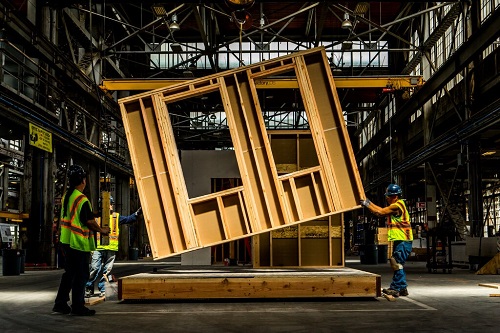 Friday, May 17, 2024
Friday, May 17, 2024  Friday, May 17, 2024
Friday, May 17, 2024 
When the University of Denver reopened for classes this fall, there was a new building on campus next to the student athletics center: a coronavirus testing center created using modular construction.
Students and staff can either walk up or drive up to have their temperatures screened or to receive a virus test at one of six windows at the center, a 40-foot-long building manufactured out of state in a factory and shipped to Colorado on a flatbed truck. Proponents say the method is faster and greener than conventional construction.
“With modular, we can build more quickly and have better quality control, while reducing waste and our carbon footprint,” said Andrew Ahrendt, director of national manufacturing at PCL Construction, a group of independent general contracting companies that manufactured the testing site, known as the Citizen Care Pod.
Modular construction has been growing in popularity among developers as a method for building multifamily housing, hotels and workplaces. The pace of hospitality and office projects has slowed in 2020 as a result of the pandemic, and many developers have turned instead to medical buildings, affordable housing and data centers.
Behind the push has been an effort to address the health concerns of businesses and schools trying to operate safely. Earlier this year, for example, modular hospitals were built in Wuhan, China, in less than two weeks.
The testing pod at the University of Denver, built in collaboration with WZMH Architects and Microsoft, can be enabled with sensors and cameras that can detect the temperature of people wearing masks and standing six feet apart. The pod was built in 10 days in a factory in Bakersfield, Calif., and took one day to set up at the university.